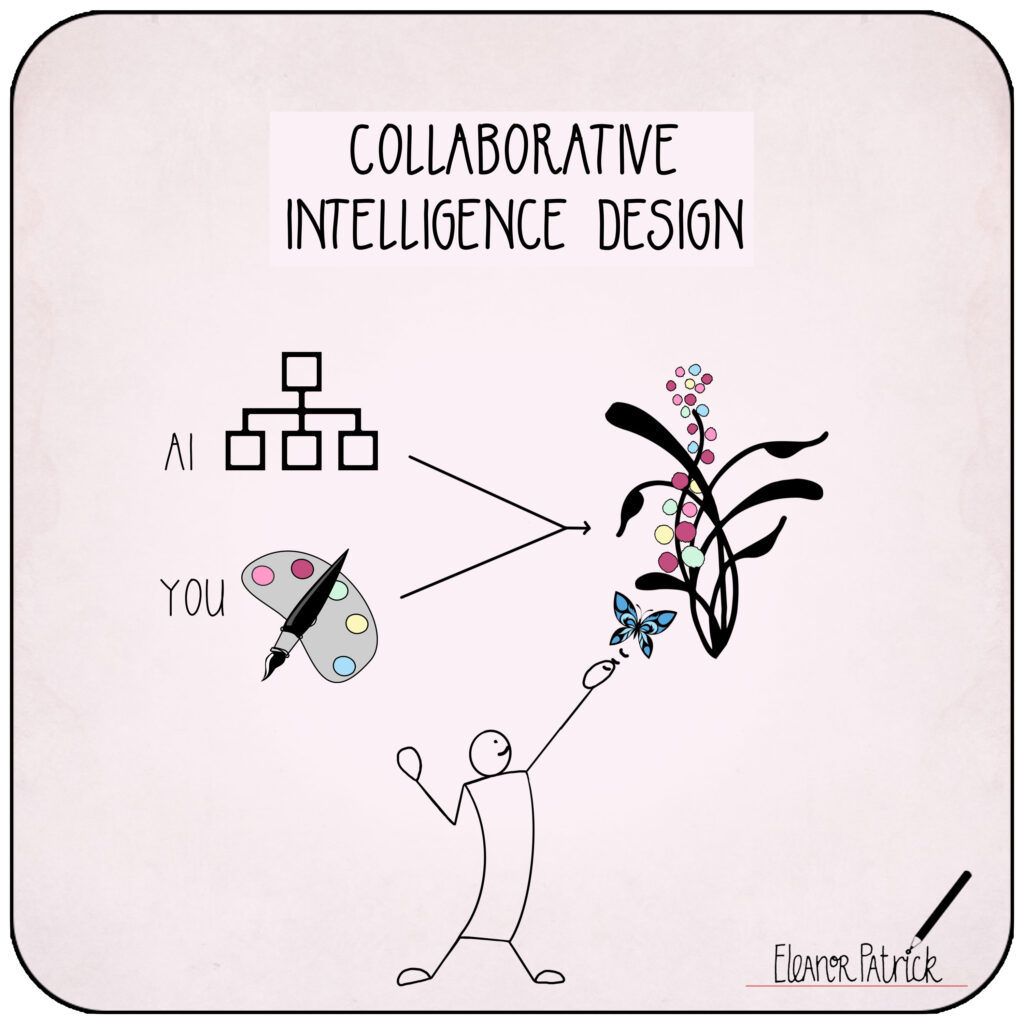
Day 16 — Collaborative Intelligence Design
Core Concept
The most powerful professional outcomes emerge when you consciously design how your intelligence and AI’s capabilities complement each other.
This isn’t about human vs. AI, but about human + AI.
You bring contextual awareness, creative insight, relationship understanding, and strategic judgment.
AI brings processing power, pattern recognition, comprehensive research, and rapid iteration. The magic happens in the conscious design of this collaboration.
Metaphor: The Architectural Blueprint
When architects design a building, they don’t compete with the structural engineers. They collaborate.
The architect brings aesthetic vision, user experience understanding, and creative problem-solving. The engineer brings mathematical precision, materials knowledge, and structural integrity expertise.
Together, they create buildings that neither could design alone.
Professional AI collaboration requires the same intentional partnership design, with each contributor leveraging their unique strengths.
Professional Story
Marcus, a financial planner, initially saw AI as either a threat to his expertise or a simple task automation tool.
Then he realized he could design a collaborative intelligence system.
He began using AI to rapidly analyze market data, economic indicators, and investment performance patterns – things that would take him hours to research manually.
But he applied his deep understanding of client psychology, life circumstances, and risk tolerance to interpret what the data meant for each specific client’s situation.
His client meetings transformed.
Instead of spending time on basic research and calculation, he could focus entirely on understanding each client’s unique situation and explaining how market realities connected to their personal goals.
Clients began commenting that his advice felt more personalized and insightful.
He had designed a collaboration where AI handled information processing while he focused on wisdom and relationship building.
Try This Today
1. Map Your Intelligence Strengths: List 3–4 things you bring to your work that are uniquely human: intuition, context, relationships, creative connections, etc.
2. Map AI’s Processing Strengths: List 3–4 things AI handles better than you: data analysis, research synthesis, pattern recognition, rapid iteration, etc.
3. Design One Collaboration: Choose a current project and consciously design how you’ll leverage each type of intelligence. Create a simple plan: “AI will handle X, I will handle Y, together we will create Z.”
Daily Integration Phrase:
“I design collaboration that leverages both human and artificial intelligence.”
 ContentFirst Marketing
ContentFirst Marketing